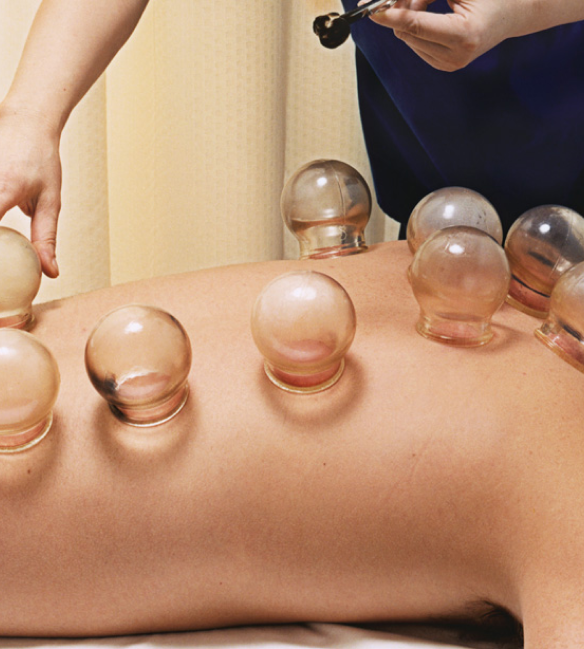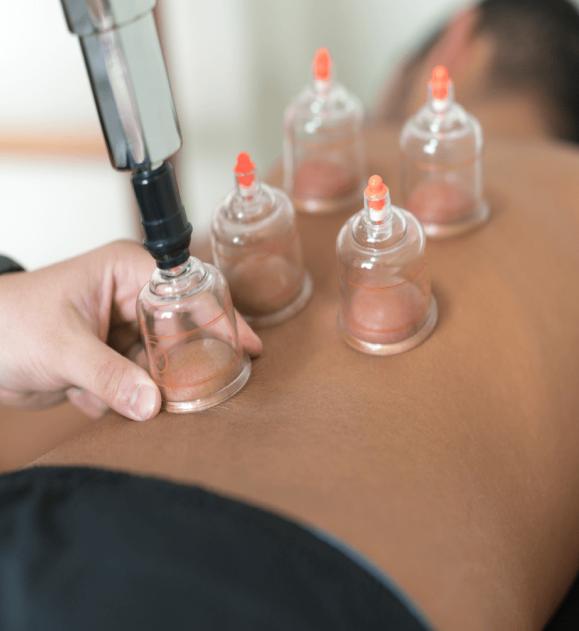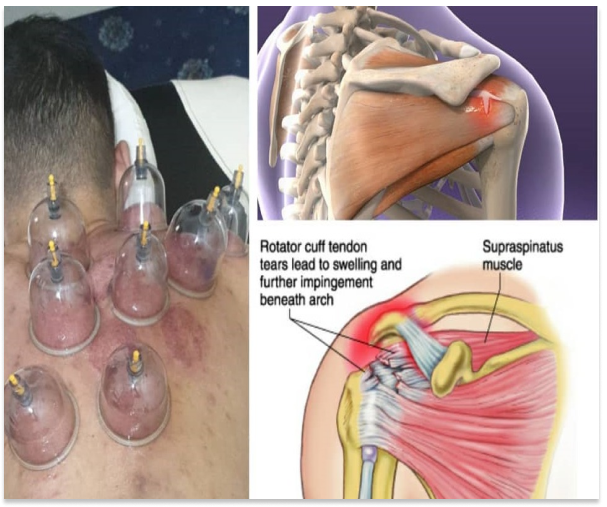Blood Cupping

About
What is Blood Cupping?
Blood cupping is an alternative medical practice that involves the use of a small glass cup to draw out blood from certain areas of the body. It involves placing a heated cup on the skin’s surface, which causes a vacuum to form. This vacuum pulls out small amounts of blood from the surface of the skin. Blood cupping is sometimes referred to as “dry cupping” or “negative pressure cupping”.

Improved Blood Circulation
Blood cupping helps to pull the skin and muscle tissue upwards, which can increase blood flow can help to bring oxygen and nutrients to the tissues, which may promote healing.

Pain Relief
Blood cupping can help to reduce tension in the muscles and release knots or trigger points and improve the range of motion.


The Procedure
- Before beginning the procedure, the skin is cleaned and disinfected to reduce the risk of infection.
- A vacuum is created inside the cup either by heating it with a flame or by using a suction pump.
- The cup is then placed on the skin and allowed to sit for a few minutes to create suction and pull the skin and underlying tissues into the cup.
- The suction can be adjusted by using a valve or by sliding the cup up or down on the skin.
- Once the cups are in place, they are left on the skin for up to 15 minutes.
- The cups may be placed on various parts of the body depending on the condition being treated.
- After the cups are removed, small incisions may be made on the skin to allow the blood to flow out.

Benefits
There are many benefits of blood cupping, some of the examples are:
- Reduces pain and inflammation
- Improves circulation
- Relieves stress
- Strengthens the immune system
- Increases energy
- Improves digestion
- Aids in detoxification
- Enhances skin tone
- Promotes healing
- Improves overall health and wellbeing
FAQ! Need Help?
We’ve got you covered
Blood cupping is generally considered safe when performed by a trained and licensed practitioner. However, it may cause mild to moderate pain, bruising, and redness in the treated area. It may also increase the risk of infection if proper hygiene is not maintained. It is not recommended for people with bleeding disorders, skin infections, or who are taking blood-thinning medications.
What are the benefits of blood cupping?
Proponents of blood cupping claim that it can improve blood circulation, reduce pain and inflammation, boost immunity, promote relaxation, and treat various health conditions such as migraines, asthma, arthritis, and back pain. However, there is limited scientific evidence to support these claims.
How often should one have blood cupping?
The frequency of blood cupping sessions may vary depending on the individual’s health condition and goals. Some people may benefit from having it done once a week or once a month, while others may need it less frequently. It is important to consult a healthcare provider or a licensed practitioner before undergoing blood cupping therapy.
Who should not try blood cupping?
Blood cupping may not be appropriate for everyone. People with certain medical conditions, such as blood disorders or skin conditions, may be advised to avoid blood cupping. Pregnant women and people with weakened immune systems should also avoid blood cupping. It is important to talk to a healthcare provider before trying blood cupping to determine if it is safe for you.
